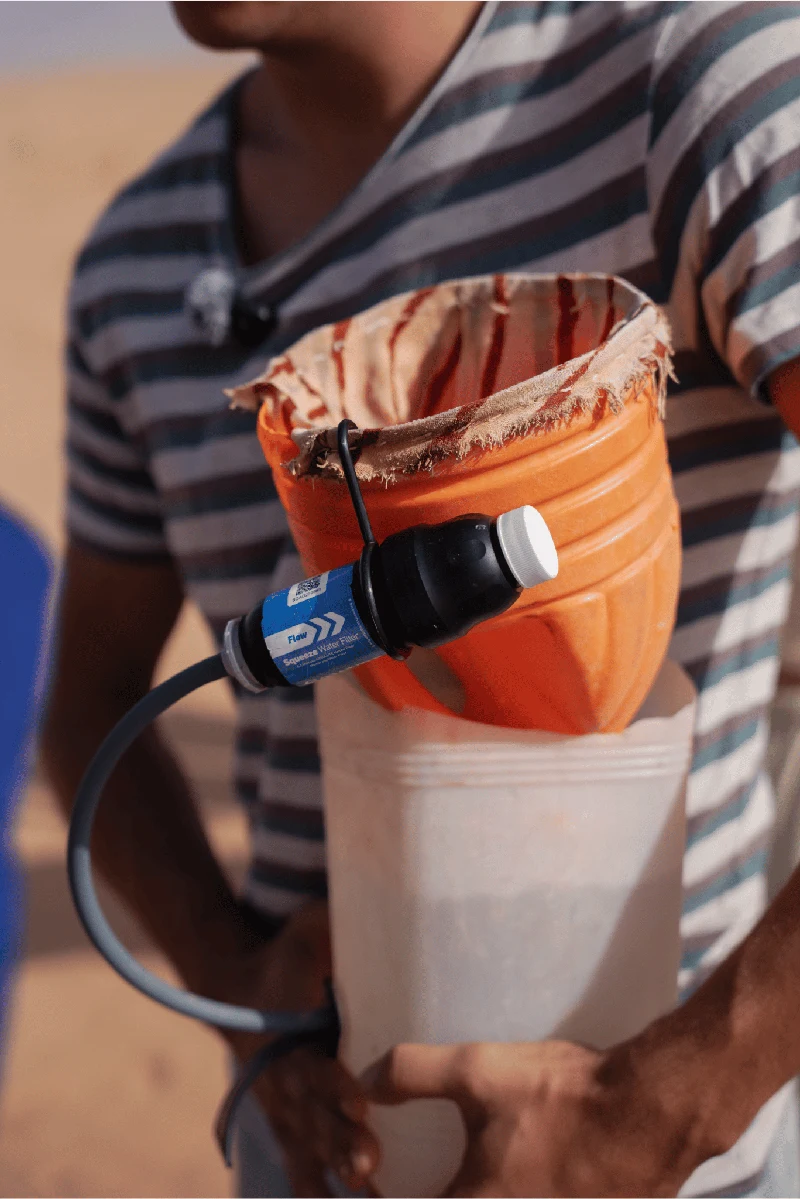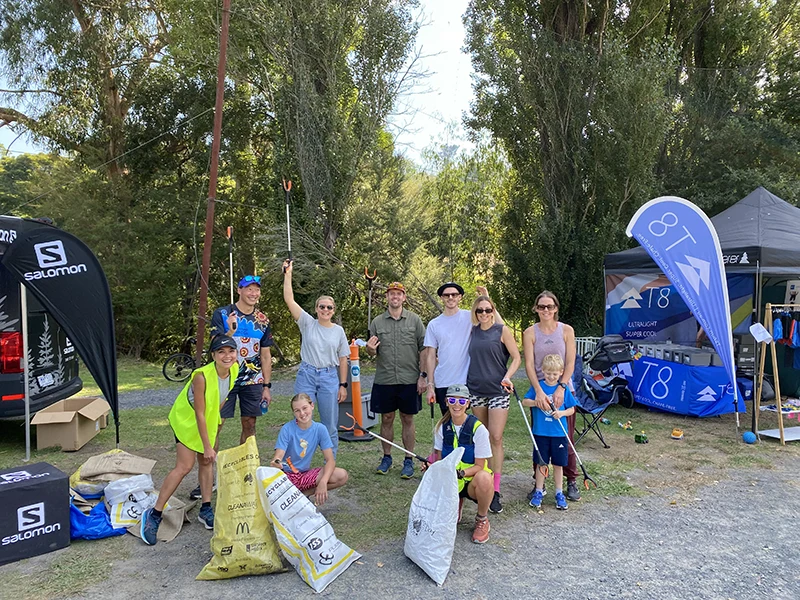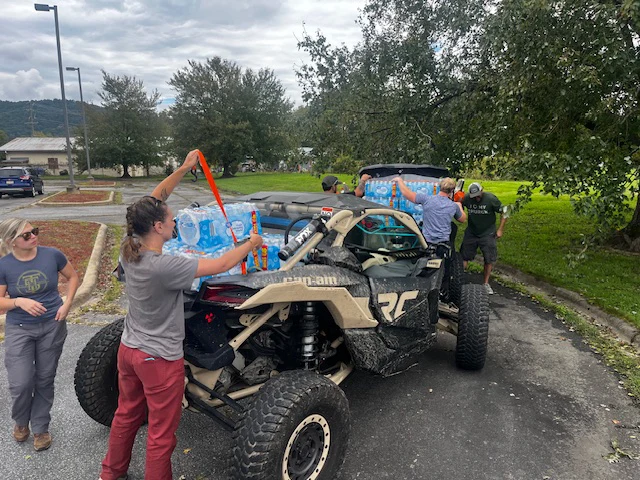

When most people imagine Sawyer filters, they picture a little contraption that’s used in the backcountry to remove harmful bacteria from the water. You might scoop a bag full of murky water from a questionable water source, knowing that your Sawyer Squeeze or Mini will keep you safe. But the functionality of Sawyer water filters doesn’t end when you pack up your gear and head home. Sawyer filters can be used beyond the trail, supporting healthier water solutions across the globe.
Here’s everything you need to know about trail filter use beyond the trail.
Capacity of a Sawyer Water Filter

Sawyer has a range of different filters that accommodate use everywhere from developing countries to the kitchen faucet. The Sawyer Mini and the Squeeze are extremely compact, which make them popular picks for outdoor enthusiasts. The Sawyer Squeeze can filter up to comes with a lifetime warranty and the Mini has an up to 100,000 gallon guarantee. However, you’re much more likely to lose or damage these filters than wear them out.
Substances that Your Water Filter Removes
The Sawyer Squeeze and Mini are rated to 0.1 microns, which means that they’re designed to remove 99.99999% of bacteria like salmonella, cholera, and e-coli. They’re also great combatants of protozoa like giardia and remove 100% of microplastics.
Once you’ve left the trail, you can continue using your Sawyer filter in the following ways:
- Install Your Filter on a Water Bottle
If you’ve ever spent time with hikers, you’ve probably seen them attach a Sawyer Squeeze or Mini directly to a water bottle. Every 28mm bottle is compatible with the threading pattern of these filters. If you live somewhere with questionable water sources or you travel a lot, it never hurts to have a filter and a compatible water bottle on hand. This system helps reduce water contaminants no matter where you are.
- Use a Filter on the Kitchen Tap

Although Sawyer is best known for its pocket-sized filters, it also has a tap water filtration system that’s easy to use, and it can be installed on a faucet while you’re traveling or while you’re at home. This system is capable of filtering up to 500 gallons of water per day. It’s ideal in urban locations where emergencies or unsafe drinking alerts are in place. The inline filter fits 17mm to 20mm faucets, garden spigots and some aerators, which is a good option if your water safety levels vary by tap. This filter has a similar structure as the Squeeze filter, but is intended for quick and efficient use on a tap.
- Attack Viruses While You’re Abroad with an S-series Select Purifier

Standard Sawyer filters target common contaminants that are found within the United States like bacteria and sediment, but those who travel abroad know that virus contamination can also be problematic in water sources. The Sawyer S3 Select Purifier was created to treat even the worst water sources and the Sawyer S1 is designed to specifically target chemicals and pesticides in water, allowing you to choose the filtration system that’s best for your situation.
Why Using an At-Home Filter is Important

In most countries, it’s fairly easy to assume that tap water is safe to drink. In the United States, federal law requires that water systems have to filter certain contaminants - but not all of them. Many US households still report high levels of toxins like nitrates, microorganisms, arsenic, and chlorine, which is why an at-home water filtration system can be useful. The right filter allows homeowners to further decontaminate their drinking water prior to consumption.
Beyond the Trail Filter Storage
Another important consideration is at home trail filter storage. Once you come home from your journey, you should take these steps to clean and optimize your filter prior to stashing it between uses. This will allow you to extend the life of your filter, while maintaining its flow rate.
- Backflush your filter: Filters like the Squeeze and the Mini should be backflushed with the included syringe prior to storage. This process helps to dislodge any debris or contaminants that might’ve gotten trapped in your filter during use. Reducing these pathogens and particulates helps to maximize flow rate for many years to come. Additionally, those who struggle with particularly stubborn debris might benefit from soaking their filter in warm water prior to backflushing it since this can help to break down deposits in the filter.
- Sanitize your filter: If you know you won’t be using your filter for a while, or if you recently used your filter on a particularly dirty water source, it can be helpful to sterilize your filter by backflushing it with a special solution. Some Sawyer users add a capful of bleach to a liter of water that they use for backflushing in order to kill harmful microorganisms that might be living in their filter. This should prep your filter for clean, consistent use in the future.

- Allow the filter to completely dry: Before placing your filter in a cupboard or closet, keep in mind that you should let it air out and completely dry. This will help you to prevent molding, or bacterial buildup over the course of time. It also reduces the likelihood that you’ll freeze and permanently damage your filter while it’s not in use.
- Store in a temperature-controlled place: For best results, keep your filter in a temperature-controlled room. Avoid placing it directly in the sun because the sun may quicken the breakdown of carbon in your filter, which would lead to faster deterioration. And make sure to store your filter in a place where it won't freeze. Freezing may break the internal filter components, rendering it useless.
The human body is made out of about 60% water. The brain and the heart are 73% water. Needless to say, water is pretty important for human life. Access to clean water is a prolific issue across the globe today, but it doesn’t have to be. Implementing the use of filters in high-risk areas continues to be an important part of Sawyer’s work today. Whether you’re on the trail or you’re at home, filters offer an ideal solution for those who only have access to contaminated water sources.
From the Squad
Campfire conversations with our community, from Squad Members and Ambassadors to Brand Partners and the Sawyer team.

















